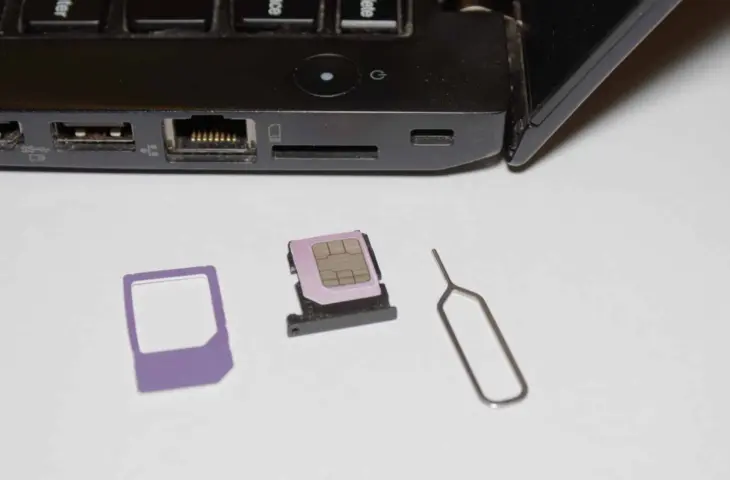Is having a SIM port in your laptop convenient, or rather: necessary?
If you’re often on the go with your laptop, you know it well: rising frustration with slow Wi-Fi networks, slow connections, or the hotspot that won’t work on your smartphone. That’s why it’s worth checking if your laptop has a feature that’s often overlooked: the SIM card module.
Why not a Traditional SIM Card?
When you think of a traditional SIM card, you naturally think of the card with a built-in chip. Or having to switch SIM cards when purchasing a new smartphone. That’s never fun. With an eSIM, all that is a thing of the past. Your numbers remain digitally stored and the data is easily transferred digitally from one device to another. As a user, you get much more flexibility, and that’s never a bad thing.
Is My Laptop Suitable?
First and foremost, you need to have the right SIM card, which is the data SIM. The big difference with a traditional SIM card is that you can also make calls and send SMS with that. A data SIM is focused on internet connection and data transfer.
To find out if you can insert a SIM card into your laptop, check the ports and inlets on the device itself. The inlet looks similar to that of your smartphone and often needs to be opened with a pin as well. If this doesn’t help, you can always consult the manual or look up your laptop’s model number.
A SIM module is often referred to as WWAN (Wireless Wide Area Network). If you see something like “WWAN-enabled” in your device manager, you’re good to go. If not, you can still consider using a 4G USB dongle or MiFi router, but then you’re carrying extra (and actually unnecessary) hardware again.
If you don’t have the right laptop, there’s still the possibility of using an embedded SIM or eSIM. It does exactly the same as a SIM card, but as the name suggests, everything is digital.
How Do You Ensure Everything Works Properly?
The installation process is actually very similar to that of your smartphone or tablet. Remove the SIM tray from the laptop, place the SIM card correctly in it, and click the tray back into the slot. If there’s installed SIM software on your laptop, start it up to set everything as desired. However, this depends on the model. Note: it may be that a micro or nano-SIM doesn’t fit in the tray, but only a standard format. Adapters offer the solution here.
What’s in it for Me?
SIM cards have been ensuring for decades that smartphones can connect to mobile internet. Currently, most laptops also have a SIM card port, but not everyone is aware of this. A SIM card in your laptop functions as a 4G network. You can connect to the internet everywhere without needing a Wi-Fi or wired router. No more searching for Wi-Fi passwords and networks with a somewhat decent signal.
Mobile networks are better secured than public Wi-Fi. You thus reduce the risk of data leaks or hackers peeking on unsecured networks. Some models even allow you to set up your laptop as a hotspot, so you no longer need to rely on your smartphone AND battery consumption is reduced. Then you can share your internet connection with other devices, such as a tablet or second laptop. For this, you need to configure some settings and then you can get started.
Not for Everyone
You’ll find such ports more often on business laptops. Consumer devices often don’t have them because it’s assumed that private individuals use their laptop little or not at all on the go. In that case, a SIM card is unnecessary, because if you work from home, you’re better off with a Wi-Fi connection.
As mentioned earlier, not all card formats are supported and you may need to manually download the necessary software and drivers. This can be a stumbling block for some. There are often extra costs involved with such a data SIM card, because you purchase it on top of your regular card. This in turn comes with a special subscription, and so the total cost quickly adds up.
In Belgium, the following providers support a data SIM card, ranging from 15 euros to 36 euros per month: Proximus, Mobile Vikings, and Orange.
Conclusion
A SIM card in your laptop isn’t a must for everyone, but for the right user, it can be a wonderful discovery. The answer to the question: “why (not)?” depends entirely on you.
Business users who are often on the go and like to connect multiple devices without too much hassle shouldn’t really hesitate. People who mainly work from home and only occasionally use mobile internet are better off without it. Here are all the pros and cons listed once again:
Advantages
- Always online, even while traveling or in locations without Wi-Fi
- Safer option than public Wi-Fi networks
- No additional hardware required
- Save your smartphone battery
- Suitable for business users who are frequently on the move
Disadvantages
- Not every laptop has a SIM module
- Not every size is supported
- Installation process can be complicated without the right software
- Subscription costs
